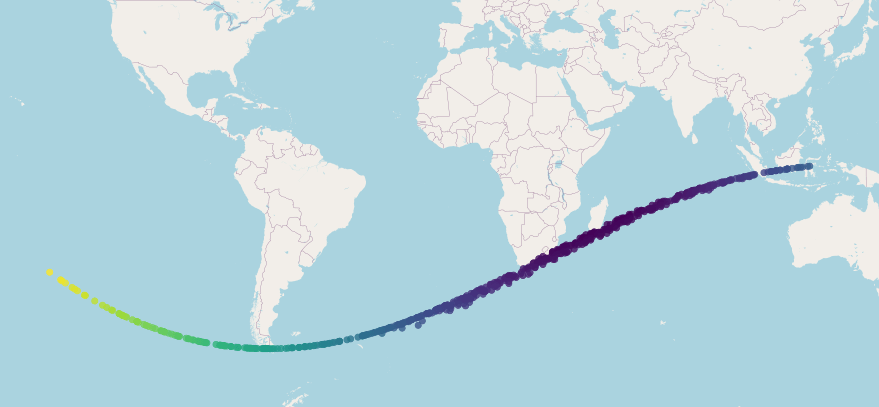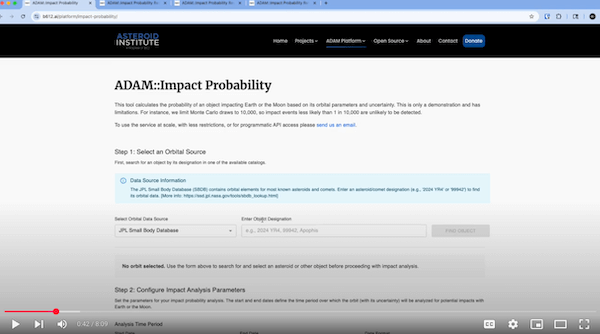Impact Probability Analysis
Assess Earth impact risks for potentially hazardous asteroids using advanced Monte Carlo simulations. Get collision probabilities, risk corridors, and comprehensive planetary defense insights.

How It Works
Impact probability analysis uses Monte Carlo simulations to assess the likelihood of an asteroid colliding with Earth or other celestial bodies. ADAM generates thousands of virtual impactor variants within the asteroid's orbital uncertainty region, then propagates each forward to detect potential collisions and calculate statistical impact probabilities.
🎯 Why it matters: Even low-probability impact scenarios for small asteroids merit careful monitoring and timely follow‑up.
Video Guide
Watch a quick overview of ADAM::Impact Probability.

Interactive Demo Examples
Explore real impact probability assessments for different asteroids. Each example demonstrates various aspects of collision analysis and planetary defense considerations.
Ready to Assess Impact Risks?
Start your own impact probability analysis and contribute to planetary defense efforts. Create an account to access the full ADAM platform.
Create Your Account